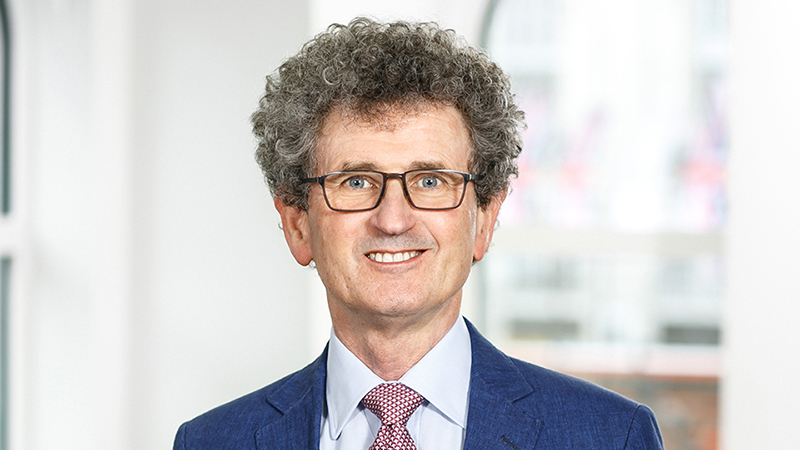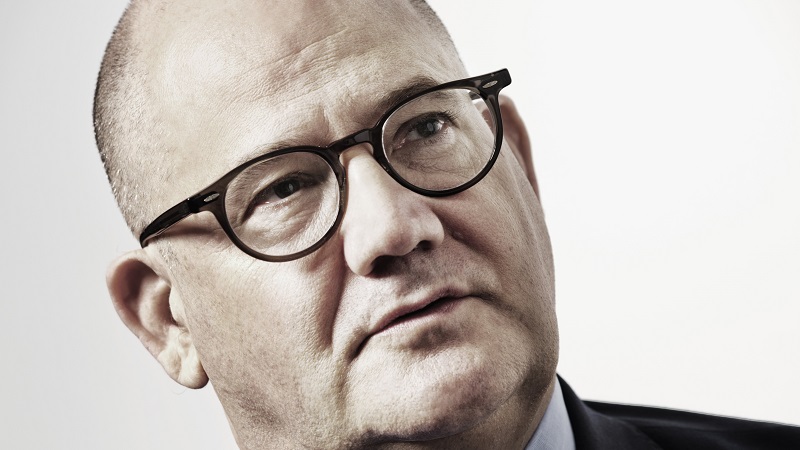Simon Melling was on the verge of semi-retirement when the opportunity to become chief executive at the recently established wealth manager Vermeer Partners cropped up, and despite working hard to get the firm up and running, he hasn’t regretted the decision for one moment.
Melling trained as an accountant with KPMG in 1984 before joining the investment management arm of bank Singer & Friedlander. It was later while at wealth manager Collins Stewart that he crossed paths with none other than Terry Smith, who he describes as “one of the brightest people I have ever worked with”.
He also spent 15 months at platform Interactive Investor. “It was the first time I’d ever been involved in a business that was loss-making, and it made me understand the significance of cashflow,” he recalls.
Melling subsequently joined Cenkos Securities as financial director and chief operating officer, where he was reunited with Collins Stewart founder Andy Stewart. He oversaw Cenkos’ floatation on Aim in 2006, before becoming CEO in 2009, at a time when a certain Neil Woodford was a major shareholder. “We had one or two interesting conversations,” says Melling.
The idea of semi-retirement first occurred to Melling when he was considering leaving Cenkos. That lasted all of two months as he ended up staying on to look after the private client investment management business based in Guernsey.
He spent about four years working on Guernsey, splitting his time between living there and commuting. But as a Londoner at heart, and a West Ham fan to boot, he naturally gravitated back to the city he calls home on a permanent basis.
“While I enjoyed my time in the Channel Islands, London is my home,” he says. “I came back here and that was when I thought seriously about semi-retirement.”
Back in the game
Famous last words, however, as before long he was put in touch with Michael Kerr-Dineen, who had founded Cheviot Asset Management in 2006 and oversaw its eventual merger to form Quilter Cheviot in 2012.
“We hadn’t met, but I was aware of him and he knew Andy Stewart well,” says Melling. “He was trying to put together a transaction that meant teams from Quilter Cheviot joining a new venture. Out of that grew Vermeer Partners.”
Melling was initially employed on a consulting basis to get the firm off the ground, but at the end of 2018 he found himself group CEO, running the entire operation. So much for taking a back seat.
“I’ve always liked private client investment management,” he says, “and I fell in love with the people I met doing that, which really motivated me. It was the easiest decision I’ve ever taken and I haven’t regretted it.”
Kerr-Dineen launched Vermeer in 2019, having brought over more than 20 investment managers from Quilter Cheviot, as well as about £1.3bn of client assets. Is the plan to tap Quilter for more talent?
“You can never rule out further teams from Quilter joining us,” says Melling.
One of the crucial decisions taken early on was to run Vermeer as a partnership and “not just have some rich sugar daddy fund the whole thing”.
“There is no major shareholder individual or anything like that. Thirty people out of the 45 have an equity stake in the partnership,” he says. “That’s important to us because we don’t need capital events or a backer to realise their investment. Also, our clients like it because we’ve all got skin in the game.”
Within the first four months of opening, Vermeer had more than £1bn under management, yet that initial asset gathering pace slowed with the onset of the pandemic last year, meaning the firm now oversees about £1.6bn.
“We’re a personal business, so it is about contact, and it’s difficult to cement a deal over a Zoom call,” says Melling. “Inevitably, it’s slowed down but we’ve been very pleased that during the Covid period we’ve added more and more accounts.”
Melling has previously said he hopes as much as 75% of the assets the team from Quilter Cheviot ran – worth around £3bn when they left – moves across to Vermeer. Is that still realistic? “It’s a bit slower with Covid, but in general that was a two-year time horizon. And we will not be far off .”
Relationship driven
Melling is quick to point out that gathering as many assets as possible in the shortest time possible is not an approach that sits well with the partnership structure.
“We are ambitious and want to grow, but we want to grow in the right way,” he says. “And that’s with good-quality assets and clients. Our service is not suitable for everybody. We’re looking for people where there’s the right fit, because we do not want to destroy the ethos we’ve created in the past two years.”
Company growth is likely to come about through the addition of specific teams rather than acquisitions, with Melling saying he’s really not a fan of the latter. “I’ve never seen it work long term. I’m far more interested in acquiring teams that can fi t into our structure, rather than make corporate transactions.”
With that in mind, what gaps are yet to be filled in Vermeer’s current set-up? Melling reiterates he doesn’t view company growth in those terms, preferring to source like-minded people who can integrate with the business, who want some ownership of the company and are willing to always put the client first.
Team members have to be interested in what Melling terms Vermeer’s “collegiate investment process”. By this he means direct relationships between investment managers and clients, which negates the need for relationship managers.
“The people you meet at Vermeer are the ones who run your money and take decisions on your investments. We are looking for that unusual animal, someone who is slightly entrepreneurial, interested in investments and in client relationships.”
Vermeer’s founder Kerr-Dineen has form for extracting teams from companies and starting afresh. In the mid-2000s he took people out of UBS Wealth Management to create Cheviot, which later merged with Quilter. And Vermeer was, of course, created in a similar way. But Melling asserts that the intention is not to simply build Vermeer up for a sale.
“In defence of Michael, he’s only done it twice and there were specific circumstances, certainly around the Cheviot-Quilter merger. One of the issues was a significant external shareholder who needed to realise money, so we are carefully avoiding that with our present structure.”
Growing in a sensible way
Melling says despite some worries during the early stages of Covid, there is a not a huge amount that keeps him awake at night. A big challenge, however, is growing the business in a sensible way and attracting quality clients at a time when the likes of vertical integration and M&A are rife.
“I hope there is a big enough chunk of business we can go after,” he says. “We’re not there for the mass market or for small pension pots. We’re not an IFA and don’t want to get involved in tax planning or anything like that. We are investment managers and aimed more towards direct stocks than most houses.”
Client portfolios contain about 70% direct investments with the remaining 30% in external funds for exposure to particular sectors or countries, such as India, emerging markets and healthcare.
In order to focus exclusively on investment management, Vermeer likes to form close relationships with firms that provide services such as tax planning, and there is a referral of business both ways. But he does think there are some “fairly simplistic processes” currently involving an IFA that Vermeer might be able to take in-house in the future.
To illustrate this, he uses a personal example of recently switching Sipp providers. He explains: “I had a Sipp with James Hay but it does not take on any new investment managers. I wanted my money managed by somebody within Vermeer Partners, so I had to switch to Curtis Banks Suffolk Life because Vermeer were on their panel. To do that I needed advice from an IFA. “That’s a straightforward, simple process. Could we do that in-house? Maybe.”
Tapping into a younger demographic
Melling notes Vermeer’s client base largely comprises a certain demographic of around 70 years old, making the need to attract younger clients a priority. He believes younger generations building up significant pension pots and choosing to engage more with them is a growing market and important for Vermeer to tap into. This is where the experience of younger employees at the firm will come in useful.
Talking of younger staff, Melling has previously espoused the virtues of succession planning and is said to know who will become the next generation of investment managers and partners.
“There is succession within each team, on the whole, so there will typically be a senior partner, aged 50 through to early 60s, and a series of juniors in their early 30s,” he explains. “Normally, they’ve worked together for quite some time, so the juniors joined as graduates and know the client base very well. And as the partners retire, they will take on those books.”
But judging on Melling’s retirement track record, or lack thereof, it will be a good while yet before Vermeer’s next CEO is announced.
This interview first appeared in the March issue of Portfolio Adviser magazine










